How to choose the right Hockey StickUpdated a year ago
One-piece composite sticks are the top-selling category for many Source For Sports stores. The Pro-Formance Advantage Stick Fitting Protocol helps staff deliver a consistent method of fitting sticks from store to store across Canada. We take pride in fitting customers with the right product for their game to help them perform at a higher level and play safely.
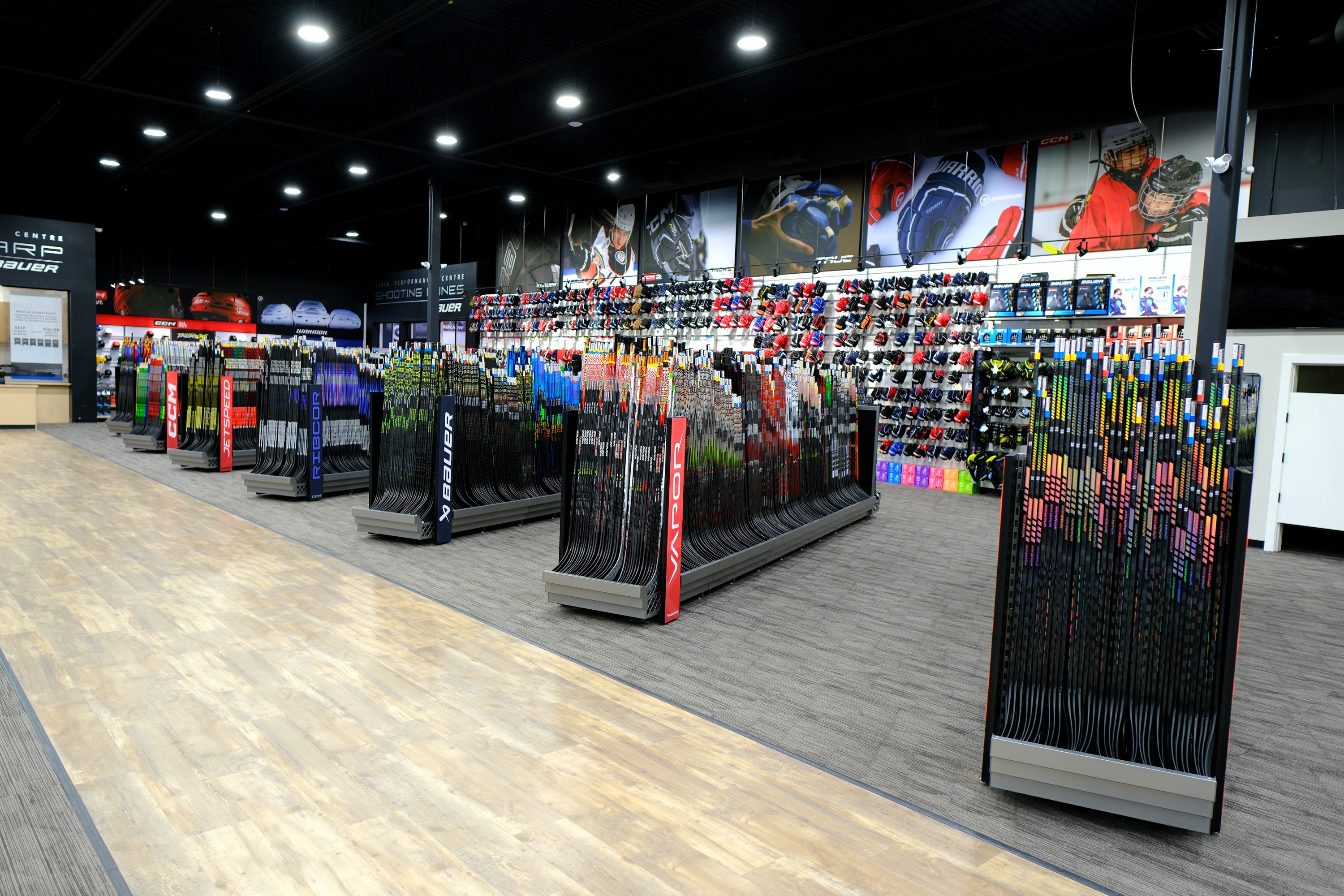
Things to consider:
- Materials and Construction of a Stick
- Stick Options (Curves, Blade Depth, Blade Angle, Toe Shape, Stick Flex, Flex Points, Stick Lie and Grip)
- Stick Sizing (Cutting Sticks and the effects cutting has on Flex)
Materials 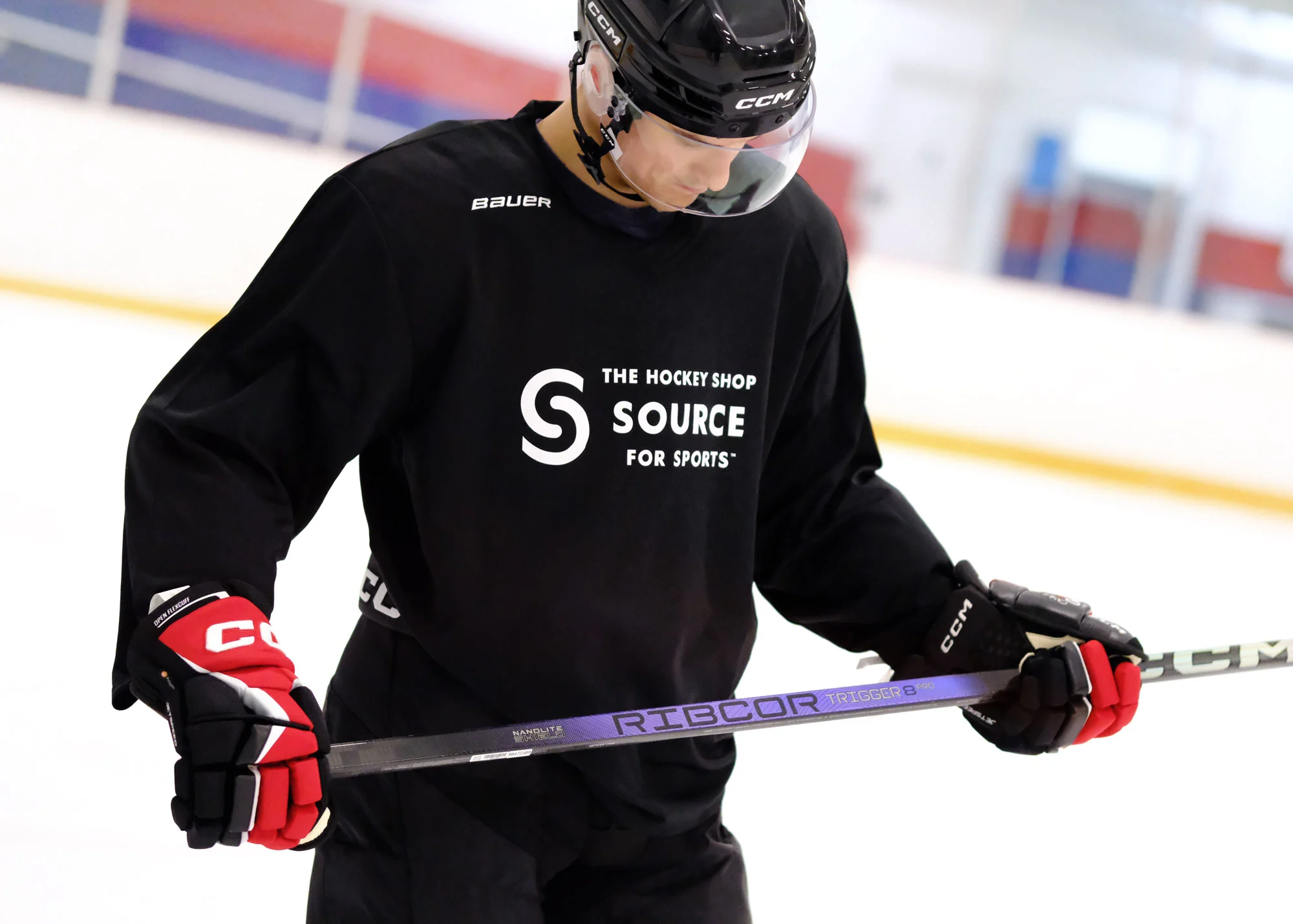 One-piece sticks used in hockey are constructed using different materials such as graphite, Kevlar, and fiberglass. In sticks that are priced lower, the composite mixture used is mostly fiberglass with a small amount of graphite. This makes the stick heavier but a little more durable. High-end sticks, on the other hand, have a greater percentage of graphite and Kevlar added to increase their durability. The amount of graphite makes the stick very light and improves its performance significantly. Manufacturers create blades differently depending on what they believe players are looking for.
One-piece sticks used in hockey are constructed using different materials such as graphite, Kevlar, and fiberglass. In sticks that are priced lower, the composite mixture used is mostly fiberglass with a small amount of graphite. This makes the stick heavier but a little more durable. High-end sticks, on the other hand, have a greater percentage of graphite and Kevlar added to increase their durability. The amount of graphite makes the stick very light and improves its performance significantly. Manufacturers create blades differently depending on what they believe players are looking for.
Stick Construction
Compression molding is a process that involves placing multiple layers of thin composite material onto a steel mandrill mold and then compressing them to form the shape of a stick. This procedure results in a very consistent shape and feel of the stick.
Bladder molding, on the other hand, involves molding the composite material over an inflated bladder while inside a mold. This method may have some inconsistencies in the shapes it creates.
True spear technology is a process that fuses layers of composite material of the blade onto the spear end of a shaft. This results in excellent energy transfer since no joint or weak spot is created.
Shaft and blade fusion is a method that involves joining a shaft and blade, and then finishing off the stick with layers of composite material.
Stick Options
- Curves - Heel/Mid/Toe curves - Where the curve of the blade is most prominent

- Heel: Puck travels along the entire blade when passing and shooting for better accuracy and harder wrist shots
- Mid: Most common curve, best of both worlds for puck control and shooting
- Toe: Flat blade face, curves sharply at the toe. Great for quick slapshots and toe drags, more difficult to control for shooting and passing accuracy
- Blade Depth - How deep the curve is
- Blade Angle - Closed face vs. open face
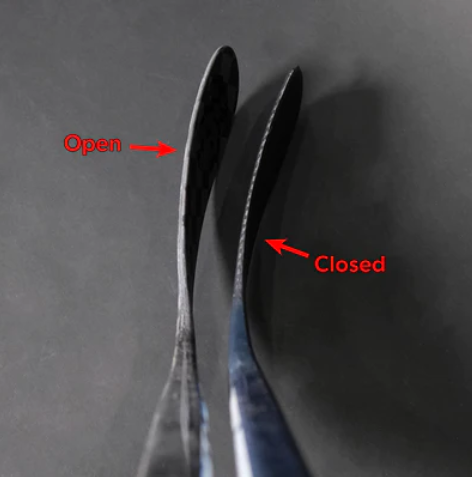
- Open face easier for loft on the puck (get the puck up quickly)
- Closed face is better for controlling and protecting the puck
- Toe Shape
- Square toe: More blade area
- Round toe: Better puck control
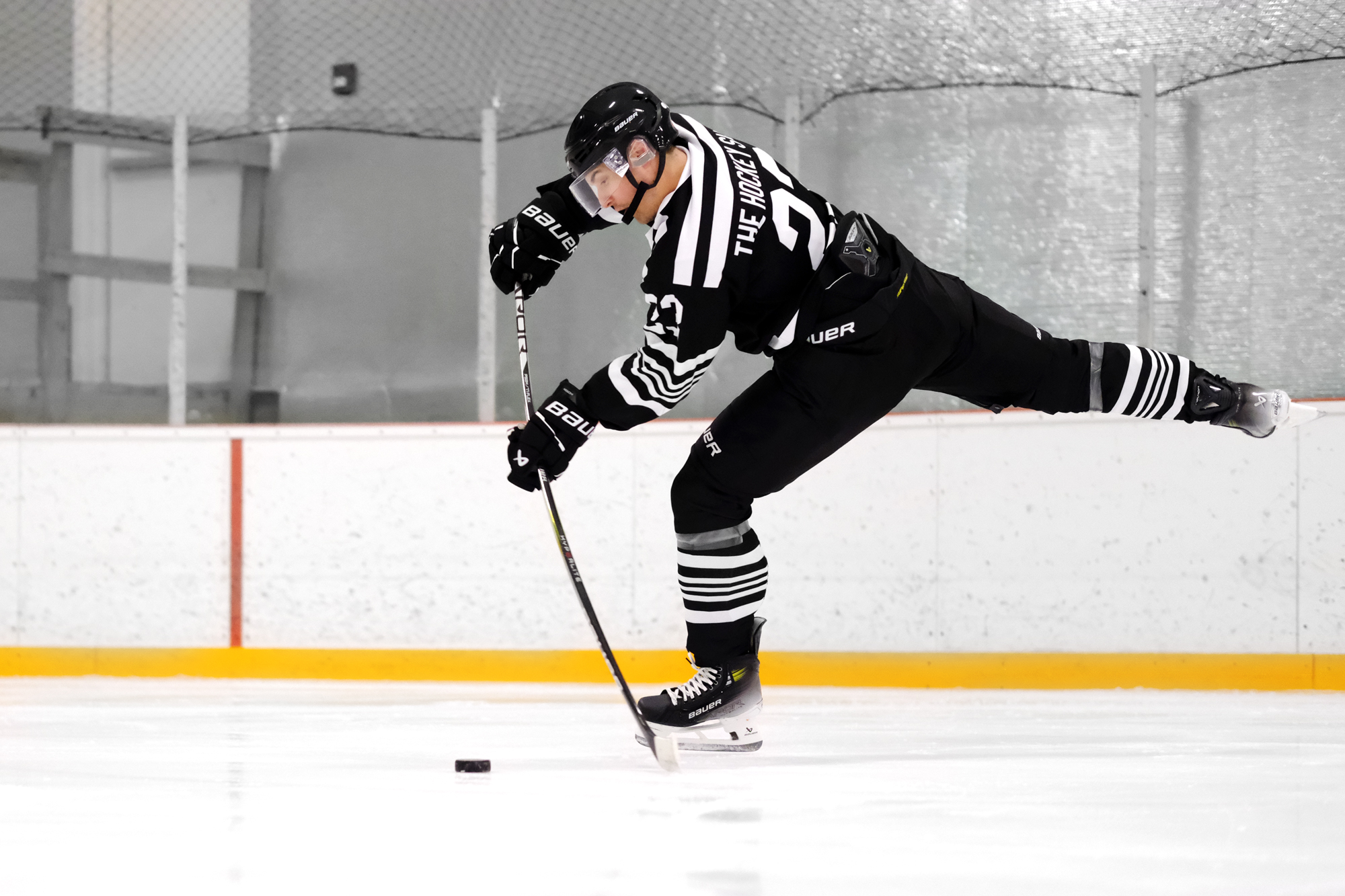
- Stick Flex - Senior, Intermediate, Junior, Youth.
- Senior Flexes: 75, 85, 95, 100, 110 - Shaft Dimensions: 3cm x 2 cm
- Intermediate Flexes: 75, 70, 65, 60, 55 - Shaft Dimensions: 2.7cm x 1.7cm
- Junior Flexes: 40, 45, 50 - Shaft Dimensions: 2.7cm x 1.7cm
- Youth Flexes: 40, 30, 20 - Shaft Dimensions: 2.5cm x 1.5cm
Players want to be able to fully flex the stick. If a stick is too soft, the resulting shot will be inaccurate and weak. If a stick is too stiff, there will be no power behind the shot.
- Flex points - Mid-flex sticks/Low-flex sticks
- A mid-flex stick will have a stiffer taper so that it flexes more in the middle of the shaft. It has a longer loading time for a more powerful shot, perfect for slap shots.
- A low-flex stick will have a stiffer middle of the shaft and softer taper so that it flexes at the bottom of the shaft close to the blade It will have a much quicker release perfect for quick snap shots and writs shots.
- Stick Lie - Lie describes the angle of the blade to the shaft
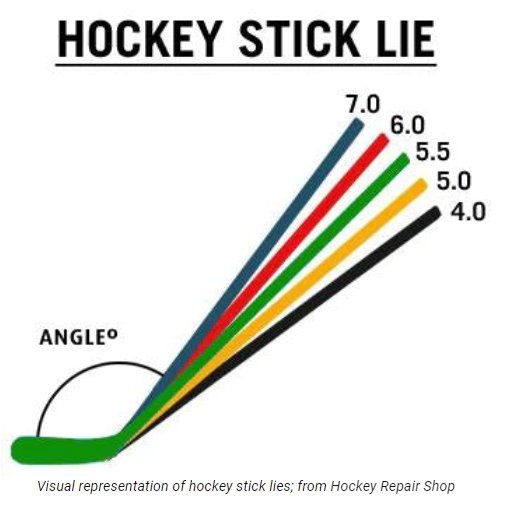
- A 5 lie is a 135-degree angle and each lie increase is an angle decrease of 2 degrees (the higher the lie the greater the angle).
- The player's body positioning impacts the lie in that the straighter up the player stands, the more toe of the blade will be on the ice. The deeper the player bends down the more the heel of the blade will be on the ice.
- If you start with the right line and add length to the stick it will put the blade more on the heel and if you cut the stick down it will put the blade more on the toe.
- A lower lie is more recommended for a player who skates bent over or uses a longer stick. A higher lie is recommended for a player who skates more upright and prefers a shorter stick. If you’re noticing too much wear on the heel or the toe of your stick then it might be a good idea to get a different lie. Go to a lower lie if you’re experiencing a lot of heel wear and go to a higher lie if that wear is appearing closer to the toe.
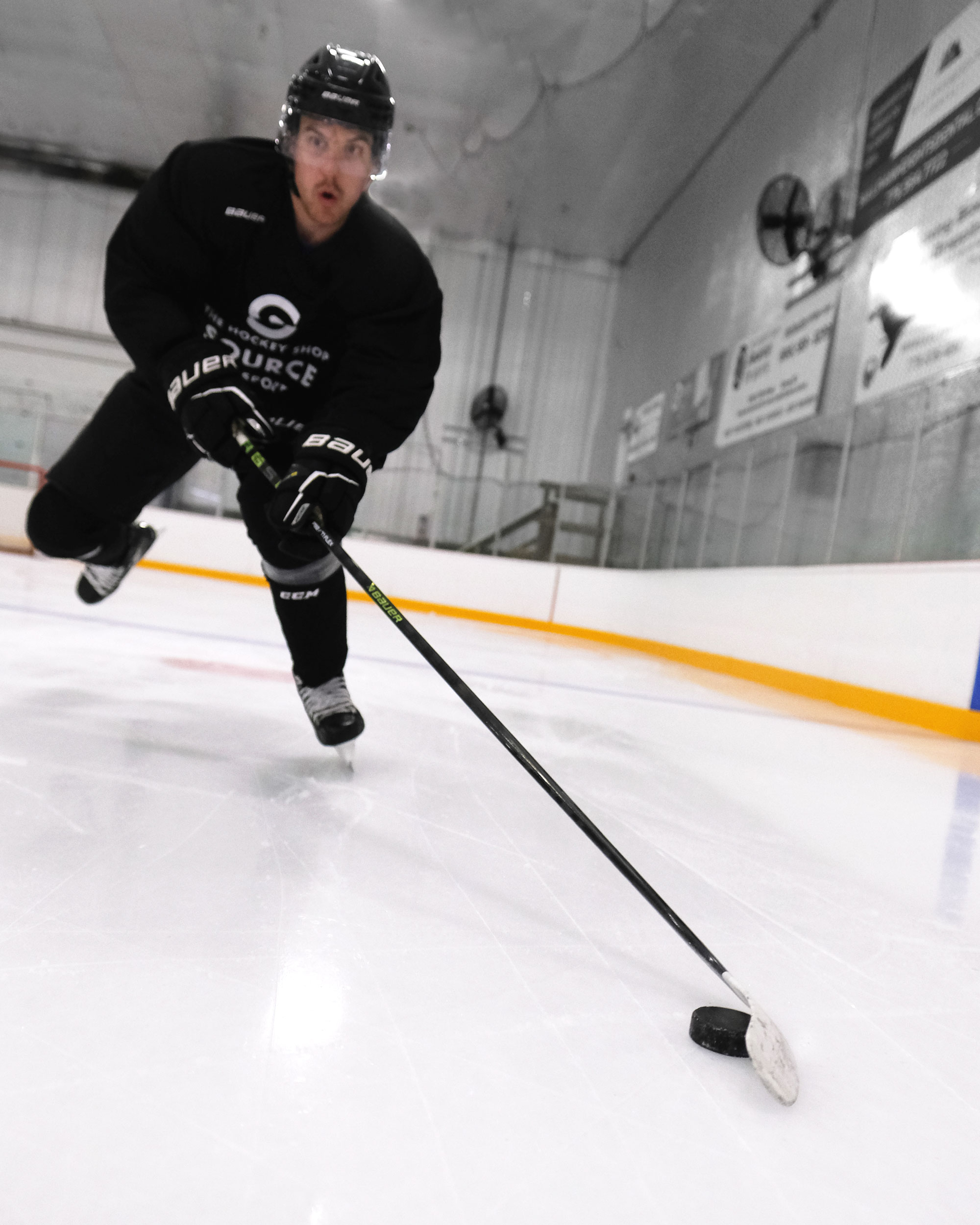
- Grip - Traditional clear finish on a stick will allow for easy movement of the player's hand up and down the shaft of the stick. The grip option is a “sticky” feeling down the shaft that will give the player better control of the stick while shooting. When leaning into a slap shot, the grip option will not allow the stick to twist in the player's hand when the stick makes contact with the puck for a more accurate shot. Some manufacturers are offering what is called a raised tactile grip. This option is just raised ridges on the shaft that offer a little more control over the stick without limiting the player's hand movement along the shaft. Grip on a stick is a personal preference option that each player will have a different opinion on. It’s important to give the customer all of the information you can so he or she can consider it all and make the correct decision.
Cutting Sticks and Effects on Flex
Cutting down a hockey stick affects its flexibility. The stiffness of a stick increases as soon as it is cut down from its full length. To educate customers about this effect, some manufacturers, such as Bauer, mark the back of the shaft with the flex rating if the stick were cut at that point. This information is important because it shows how cutting down a stick can affect its flex and performance. It is crucial to ensure that, even after cutting down the stick to the desired length, it can still flex correctly to achieve the desired performance. For instance, a 75 flex stick might feel perfect at full length in the shooting room, but it will quickly become stiffer if a significant portion of it is cut off. Check out this short video for more insights.
If a stick does not have different flex markings down the back of the shaft, the general rule is that for every inch cut off, the stick's stiffness increases by 3%. The number after "flex" (100, 85, 50, etc.) indicates the force required to flex the stick one inch. For example, a 100-flex stick requires 100 lbs of force to flex it by one inch.
- Cutting Sticks
.jpg) After making sure the stick is paid for try to determine the correct length for the customer. There will be many who have found a comfortable height that they like their sticks to be but there will also be some who have no idea.
After making sure the stick is paid for try to determine the correct length for the customer. There will be many who have found a comfortable height that they like their sticks to be but there will also be some who have no idea.
While the customer is standing on their flat feet mark the stick at the height of their nose or if they prefer standing on their tip toes mark the stick near their chin. Get the customer to hold the stick in that position to see how they like it and make sure they keep in mind that they will be wearing skates when using the stick.
Once the length has been decided make sure to clamp the stick in straight for cutting. It helps to clamp the stick at the actual point where you want to cut it and use the clamp as a guide.
Putting It All Together:
Fitting a customer for a hockey stick is not an exact science. There are no specific measurements or sizing that can be used to find the perfect stick for every player. However, by asking the right questions and combining product knowledge, you can find the right stick for the player.
Price is an important factor, and although you may not be able to convince a customer to spend significantly more than they intended, you can suggest spending a little extra for the benefits of a better quality stick. It's important to know the type of warranty that comes with the stick and how the company handles their warranties. Is the warranty consumer direct or in-store? How flexible is the company with their warranty policy? Knowing this information can help you make the right recommendation.
It's important to understand that no stick can turn an inexperienced player into a superstar. The purpose of getting the correct fit of a stick is to maximize the potential of each individual player. For instance, if the player is a tall, strong, and pure shooter who doesn't worry too much about passing accuracy, then a stick that's a little stiffer, has a higher flex point, and an aggressive curve might be a good option. If the player is shorter, passes often, and prefers wrist shots, then perhaps a low kick point stick with a light flex and a straighter curve would be a better option. Ultimately, the final decision of what stick to choose should be made by the player.